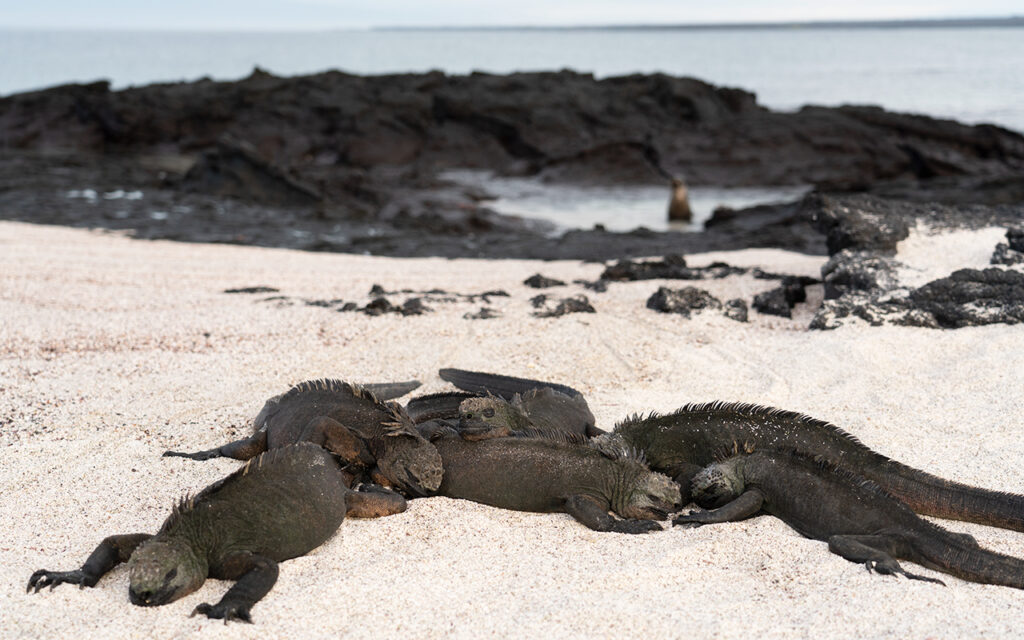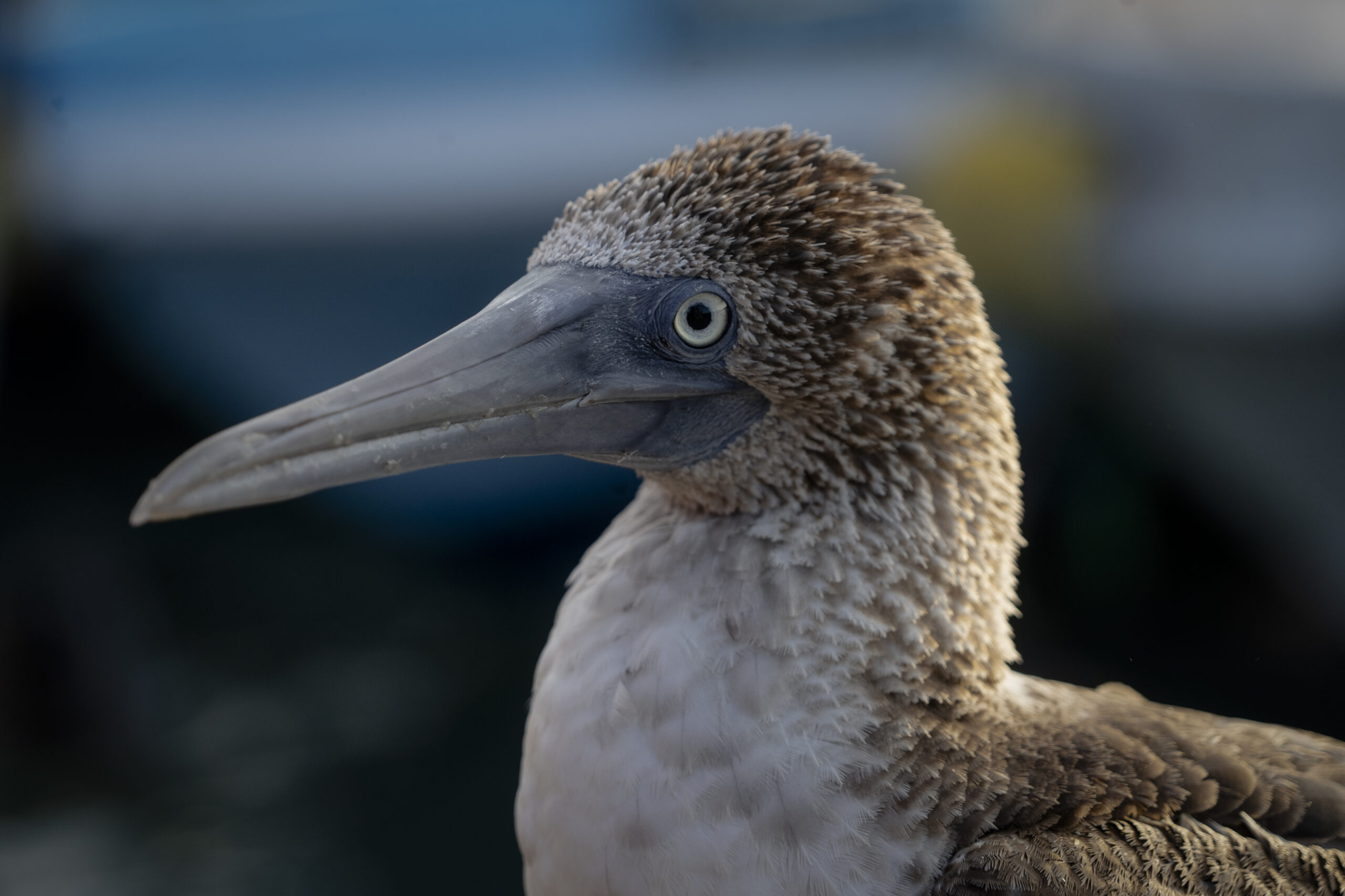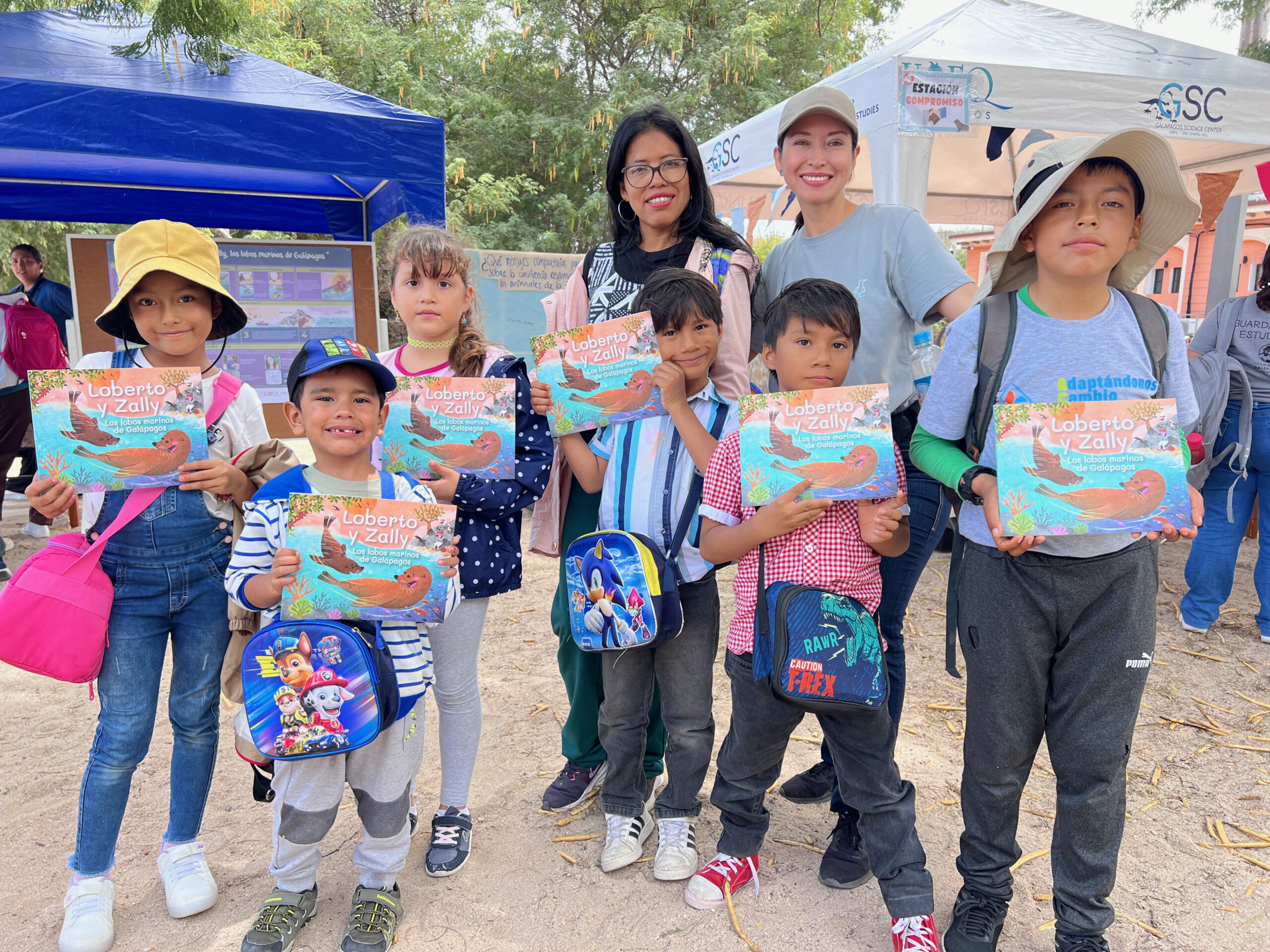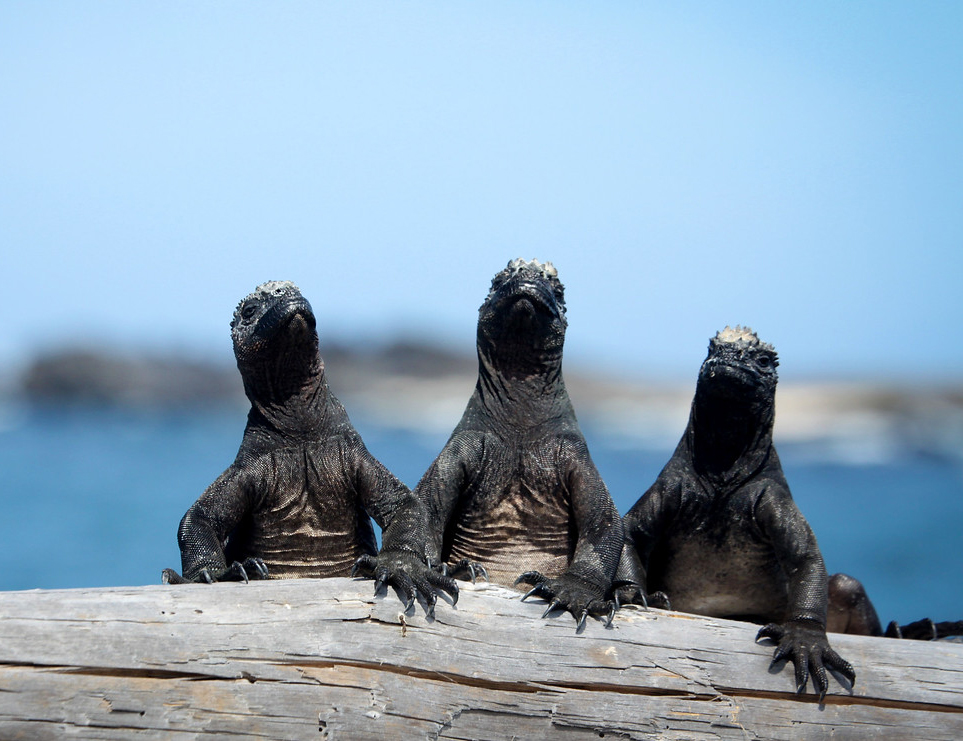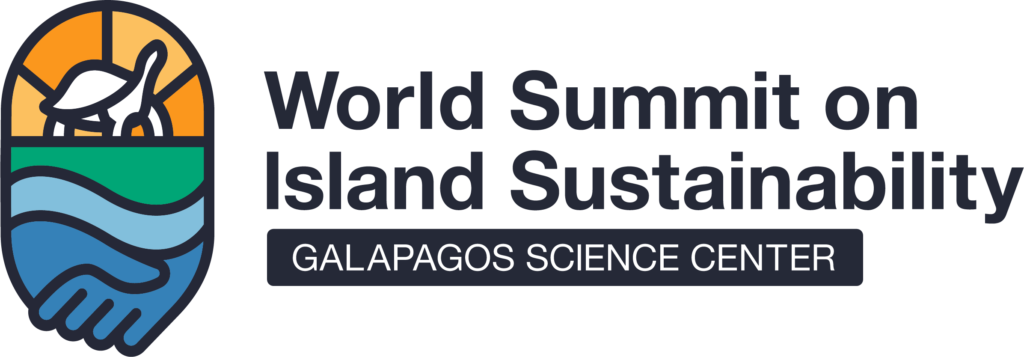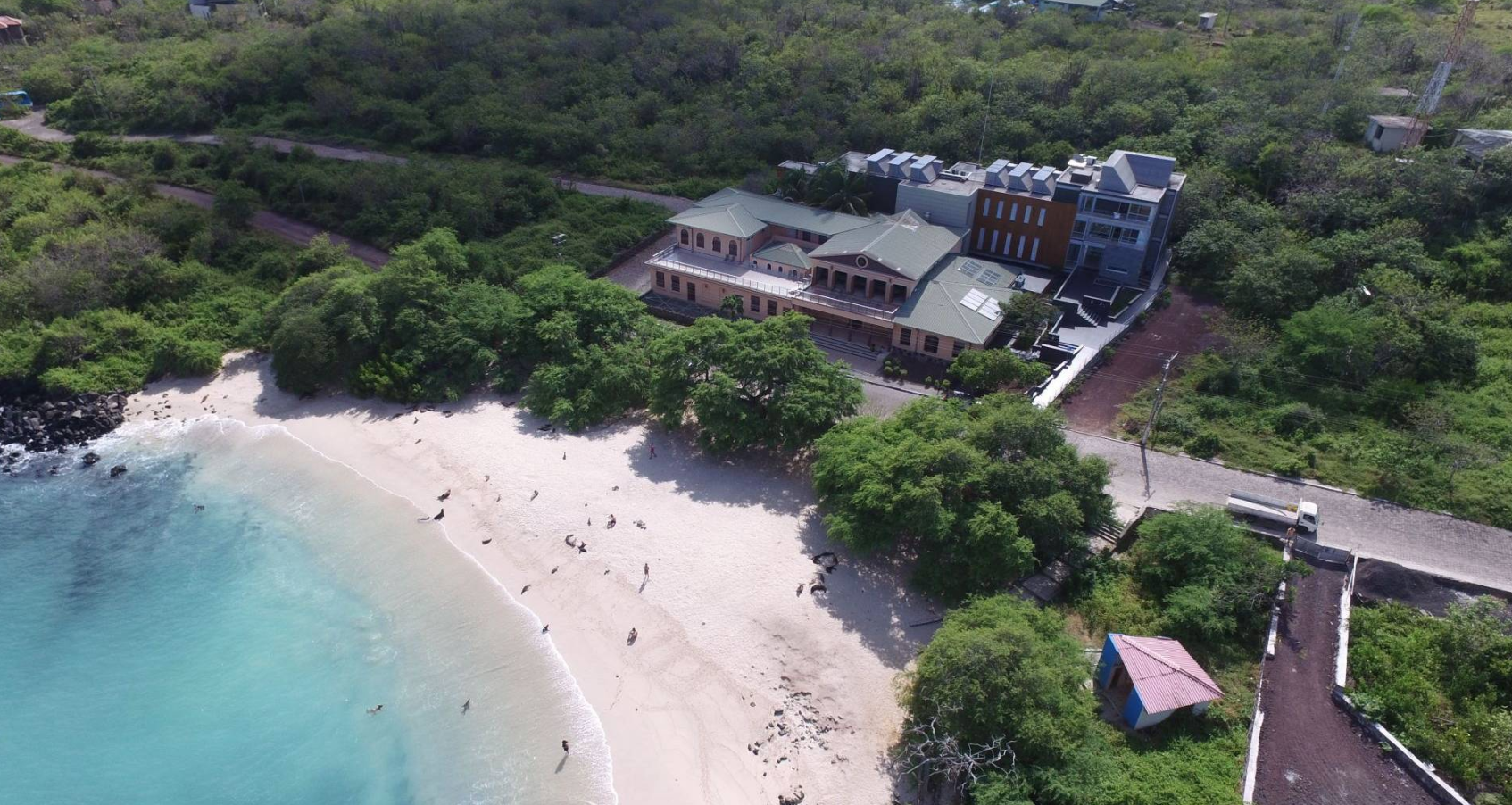Iguanas on Punta Espinosa, Fernandina. Photo: Andrea Varela.
Captain Darwin is an NGO dedicated to documenting environmental and biodiversity changes in the places visited by world-famous naturalist Charles Darwin during his voyage on the HMS Beagle 189 years ago. This NGO provides logistical support, through the use of its vessel, to local researchers at each stop on Darwin’s historic voyage.
During his visit to the Galapagos, Darwin was impressed by one species in particular: The Galapagos marine iguana. Two hundred years after Darwin’s visit, this species continues to fascinate scientists, such as Andrea Varela and Denisse Dalgo, Ecuadorian PhD students, who conduct research on marine iguanas.
Andrea and Denisse are part of the research team of the project called “Ecology of Marine Iguanas (Amblyrhynchus cristatus) of the Galapagos Islands (PC-01-24). This project is led by Universidad San Francisco de Quito (USFQ) and the University of Leipzig, with the Galapagos National Park Directorate as its counterpart. The project involves monitoring the population status and studying the ecology of the marine iguana’s diet.
This year, the project had the support of the Captain Darwin crew and the Galapagos Conservation Trust to carry out an expedition in the Archipelago and continue research on marine iguanas during the El Niño climatic event.
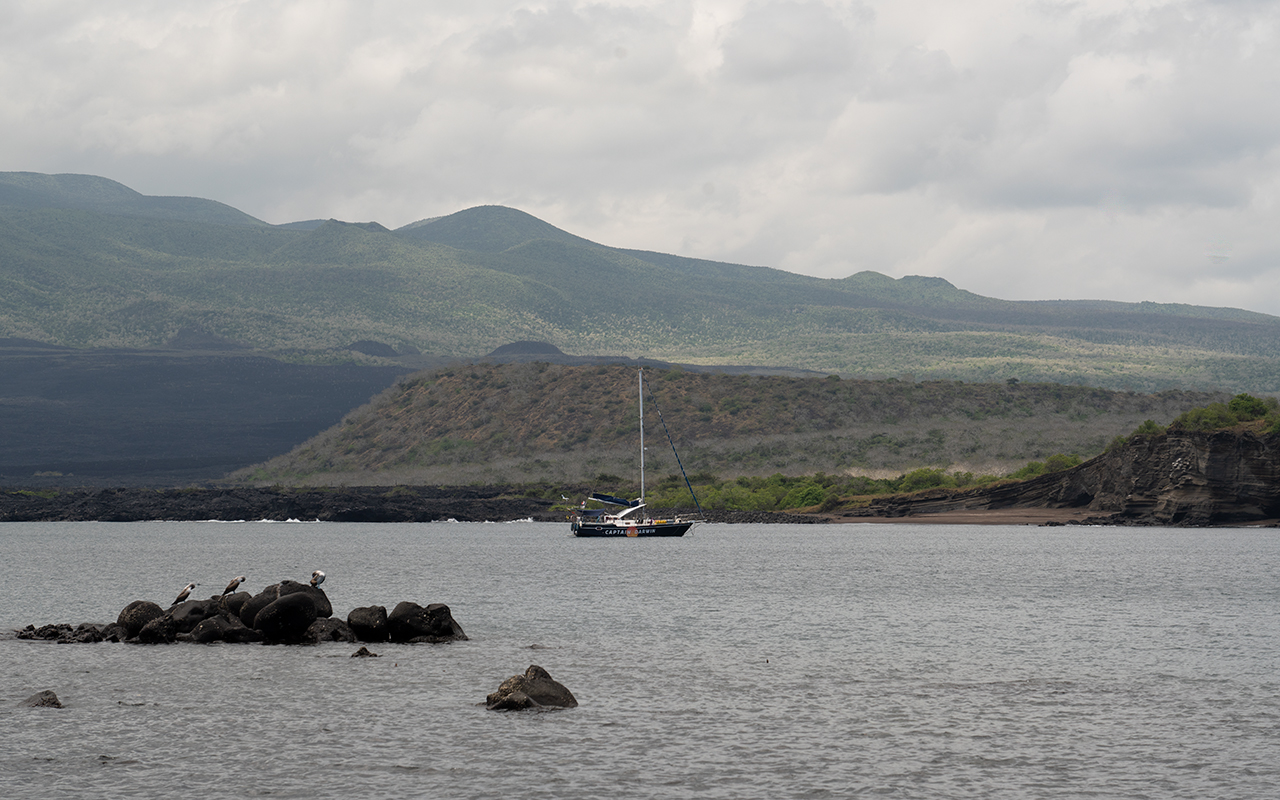
Photo: Andrea Varela.
Andrea Varela participated in the first phase of the expedition, sailing for 20 days around the Western Galapagos Islands from April to May 2024. Her mission was to monitor the population status of the main marine iguana colonies during El Niño using drones. This is a follow-up study of the Iguanas from Above project, which has been using drones for the past few years to conduct a census of the species. The data from this expedition will help both Andrea and local managers to understand the impact of El Niño on marine iguana colonies.
Denisse Dalgo joined the second phase of the expedition from May to June 2024. Her trip aimed to collect additional data for her ongoing analysis of marine iguana diets. She is currently using metabarcoding analysis, a technique to identify organisms using their DNA and rapid DNA sequencing, to study the diets of the 11 subspecies of marine iguanas in Galapagos. Denisse also collected algae samples to construct a reference DNA database of macroalgae species from the Archipelago. The samples collected during this expedition could provide crucial information about the diet of marine iguanas during the El Niño event.
Phase 1 of the expedition with Andrea Varela
23.04.2024: Preparation and sailing – Puerto Ayora (Santa Cruz)
The time just before setting sail is always crazy! The boat was prepared, our permits were approved, and we had a ranger from the Galapagos National Park ready to accompany us. On the day of the voyage, we woke up early to pick up our luggage from quarantine and head to the boat aiming to set sail at 8 am, which ended up being 10 am – sailing always takes longer than planned!
We started our journey towards an area north of Santa Cruz island. Excitement spread across the team, which besides myself included Susana Trujillo (National Park ranger), Víctor Raoult (captain), Félix Gouniot (cameraman), Rubia Cecilio (crew member) and Eduardo Sampaio (researcher).
The activities planned for the coming days were collecting marine iguana faeces and algae samples (the iguana’s main source of food) for Denisse´s project, counting dead iguanas and flying drones to collect aerial photos and videos which we use to count individuals and monitor their movements on land and in the sea.
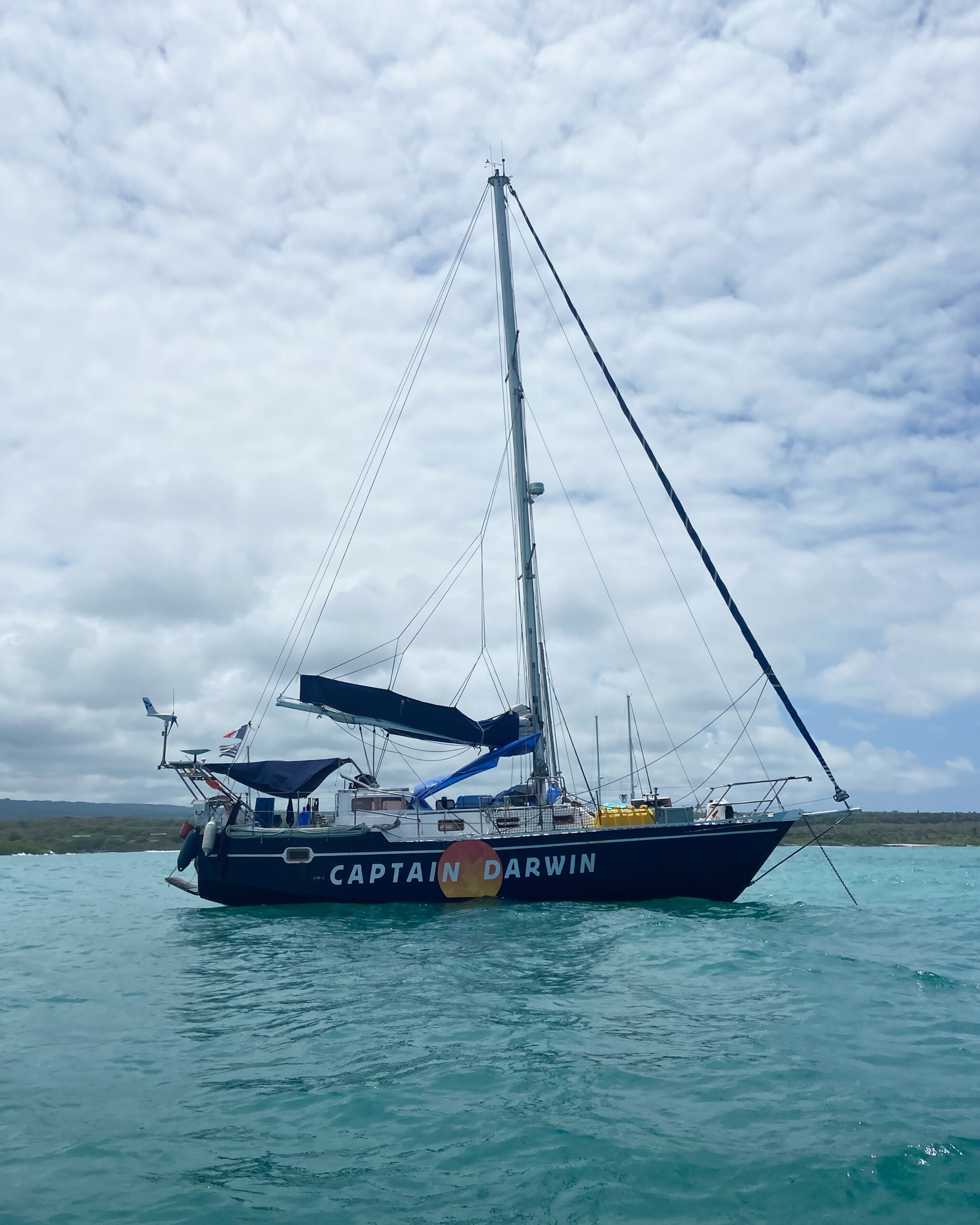
Captain Darwin’s boat. Photo: Andrea Varela.
24.04.2024: First stop – Cerro Dragón (Santa Cruz)
We started our day early as we had lots of activities to get through. Susana was very helpful in collecting the samples while I flew the drone. The marine iguanas on this island prefer to spend their time in a mud lagoon, feeding from surrounding plants, meaning we saw very few iguanas in their usual rocky coastline habitat. Thankfully we didn’t find any deceased iguanas in this colony. Our research into their diet will help us determine how iguanas adapt to climatic events, such as El Niño, that reduce their food availability.
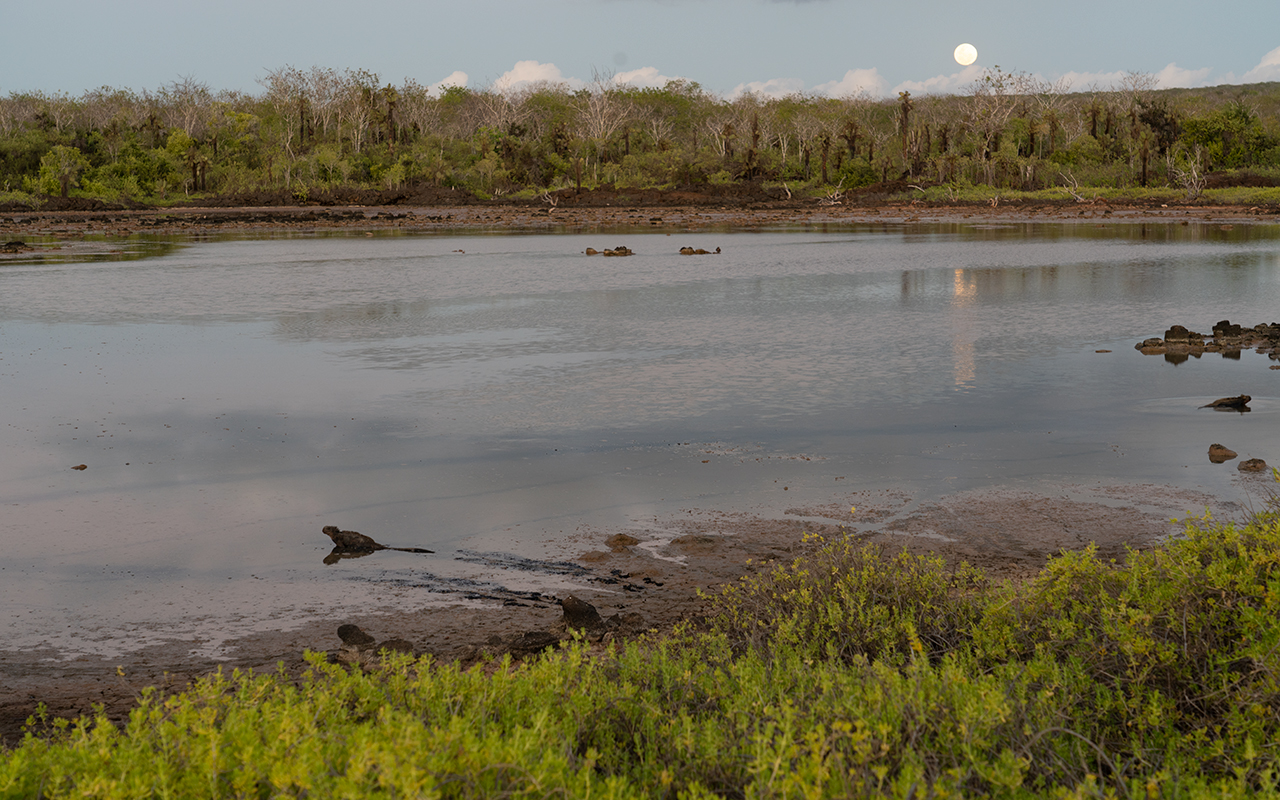
Iguanas in the mud lagoon. Photo: Andrea Varela.
25.04.2024: Second site – Sombrero Chino (Santiago)
Our second sampling site was Sombrero Chino (Chinese Hat), an islet off Santiago. The marine iguana colony at this site was pretty small and therefore difficult to find. This time, we enlisted the help of Eduardo and Félix. My job was to fly the drone from the boat and capture footage of the entire island. Sombrero Chino is a popular destination for tourists. We therefore had a great opportunity to engage them with our work.
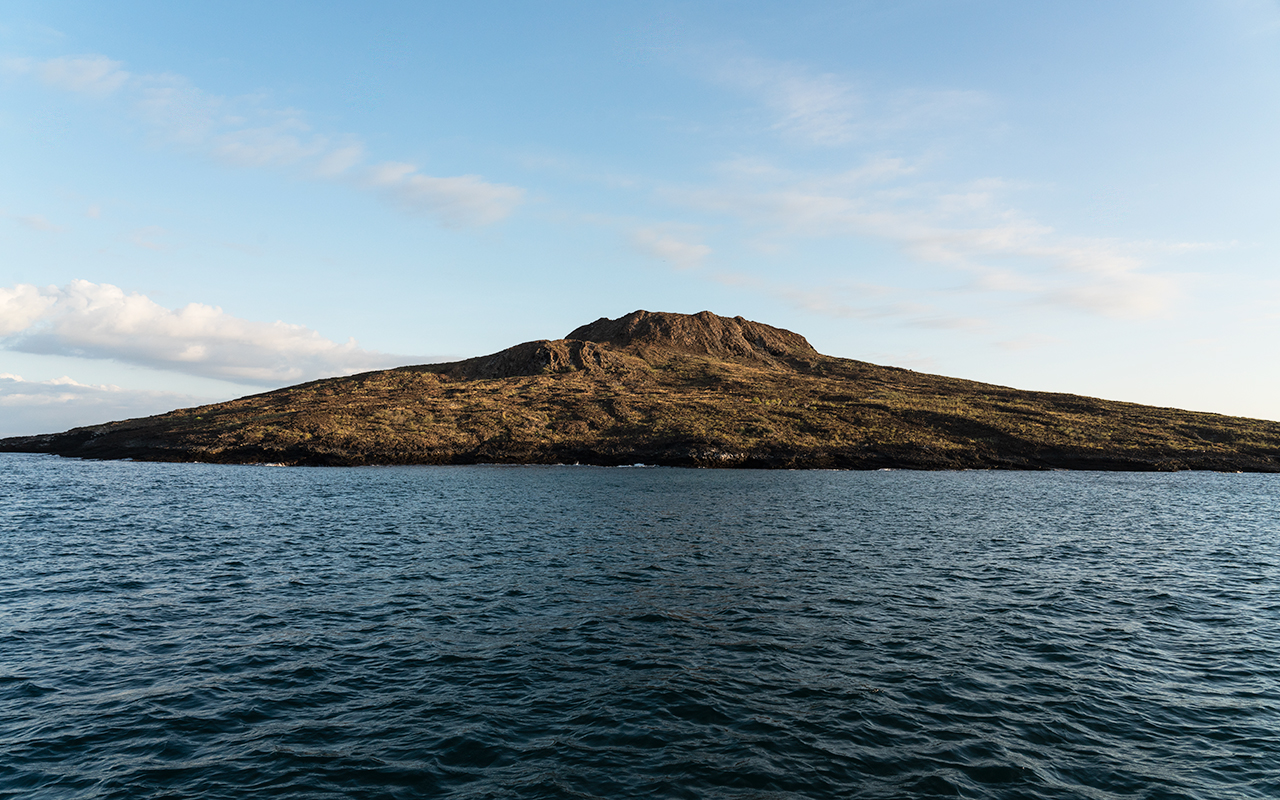
Sombrero Chino site Photo: Andrea Varela
26.04.2024: Third site – Puerto Egas (Santiago)
The following day we continued to the black lava shoreline of Puerto Egas on Santiago. Puerto Egas has a moderately abundant marine iguana colony and is a popular site with tourists. We carried out our algae collection and iguana faecal sampling and then got ready for our 12-hour journey to Puerto Villamil, a small port village located on the southeastern edge of Isabela. That night, all of us took two-hour shifts navigating the boat which was a fun experience.
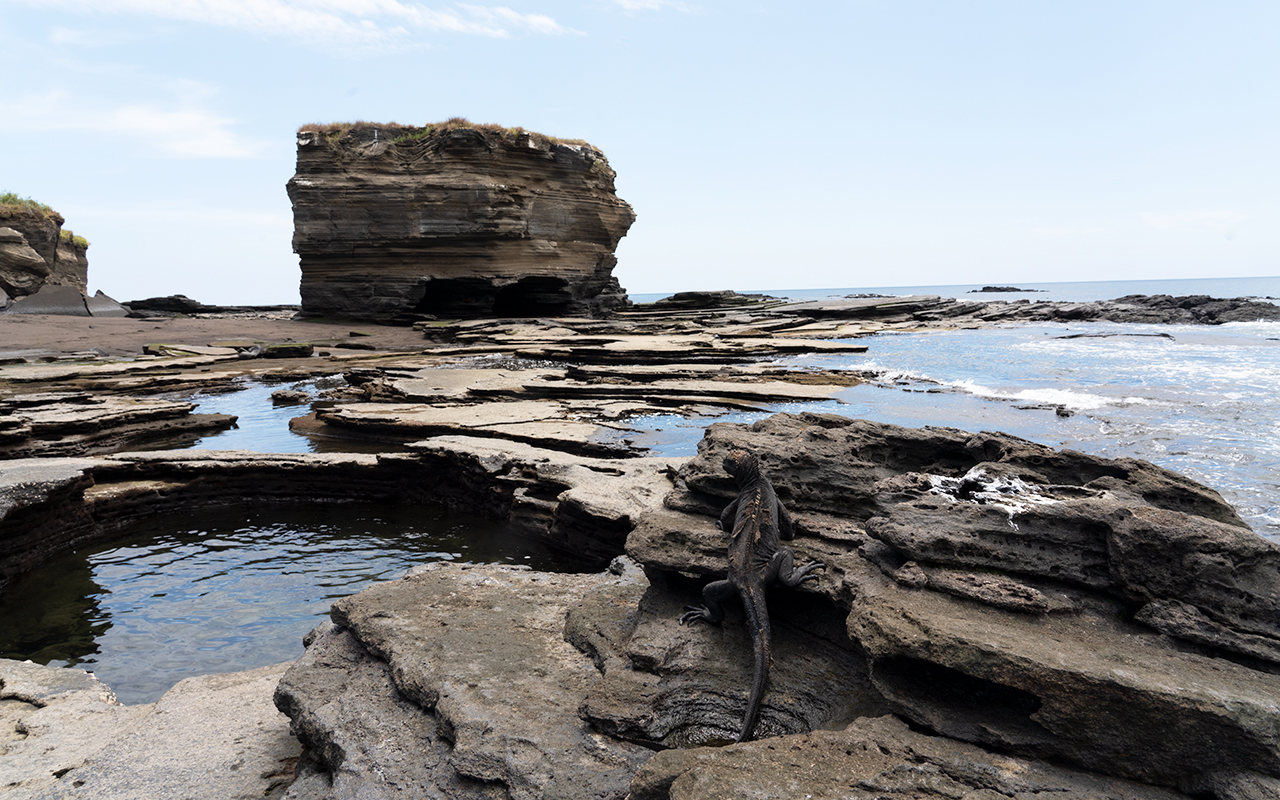
Photo: Andrea Varela
27-30.04.2024: Fourth site – Puerto Villamil and Tintoreras (Isabela)
After a long journey sailing through the night, we arrived at Isabela. We planned to spend four days at this next site so that we could film iguanas swimming! Our new site also allowed us to study iguanas in an urban environment. We saw a group of iguanas that had decided to make their home in ‘Iguana Rock’, a popular bar in the town, where the owner (Claudia) provides shelter and protection from potential attacks from dogs and cats.
Sadly, in Tintoreras, we discovered our first deceased iguanas that showed obvious signs of starvation, likely caused by the current El Niño climatic event.
01.05.2024: Fifth site – Cabo Douglas (Fernandina)
The next stop on our trip was Cabo Douglas, northwest of Fernandina. I have been lucky to visit this site four times and I love it. The iguanas here are so abundant that they live on top of each other. This island is free of invasive species which helps to protect the colony and helps it remain an area of high biodiversity.
We stayed at this site for four days to dive and film marine iguanas underwater. Cabo Douglas is a top site for diving with iguanas, so I felt incredibly lucky to be able to do so for research purposes. For three days we dived and recorded the iguanas’ movements underwater and their feeding habits.
06-09.05.2024: Sixth site – Punta Espinosa (Fernandina)
Punta Espinosa is definitely one of the most beautiful places in Galapagos and home to a large population of marine iguanas. Unfortunately, once again, we observed the ongoing effects of El Niño with dozens of deceased iguanas. Punta Espinosa is also a tourist site, so we saw many concerned tourists. It seems that in more abundant colonies, competition for scarce resources is greater, resulting in more deaths. It will be very useful to know how this colony (and others) continues to fare towards the end of the year to better understand the impacts of El Niño.
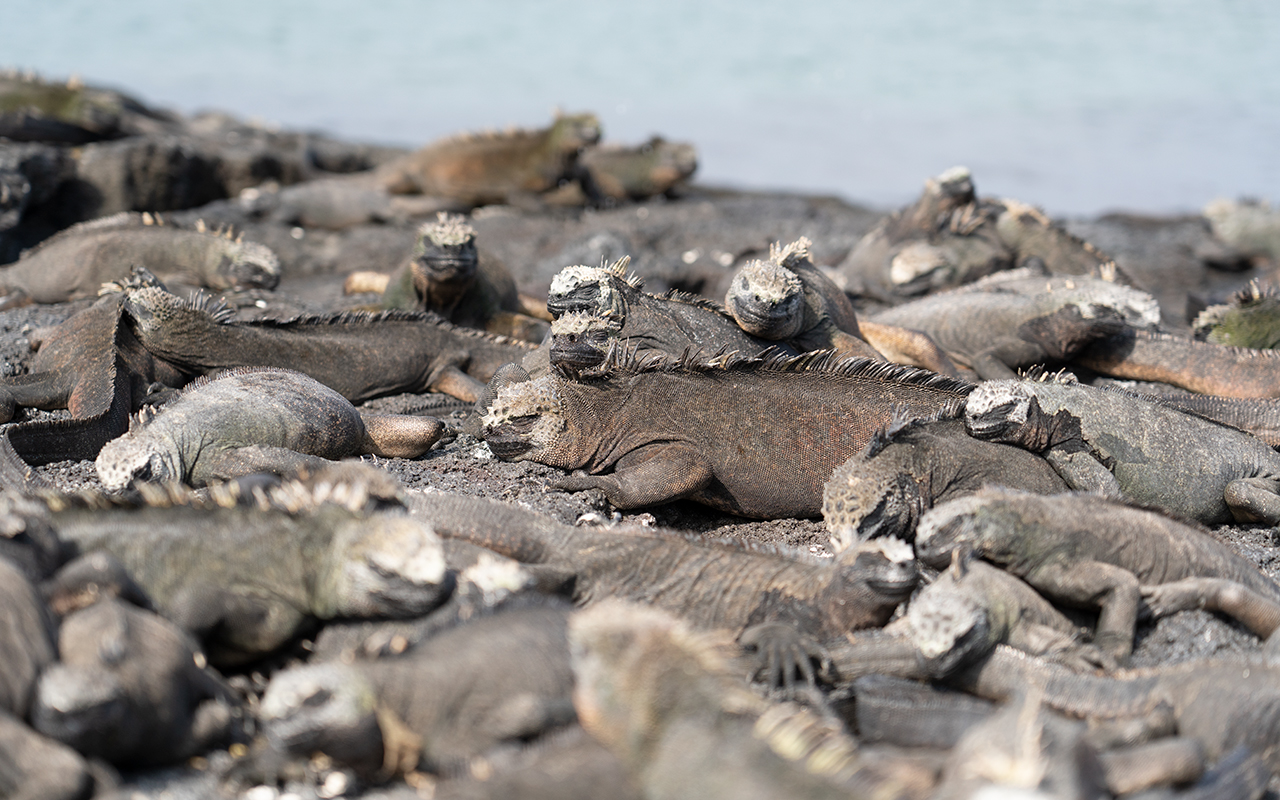
Photo: Andrea Varela
10-11.05.2024: Seventh site – Punta Vicente Roca (Isabela)
With the first half of the expedition drawing to a close, we returned to Isabela to visit a different sampling site. This site differs from our previous Isabela site as here the iguanas live on the cliff, so we had to climb to reach them! We collected the drone footage of the population from the boat. In the project I work for, Iguanas from Above, we have confirmed that flying drones allows us to monitor difficult sites like these safely. A unique moment here was seeing our first iguana hatchling, signalling the start of the hatching season!
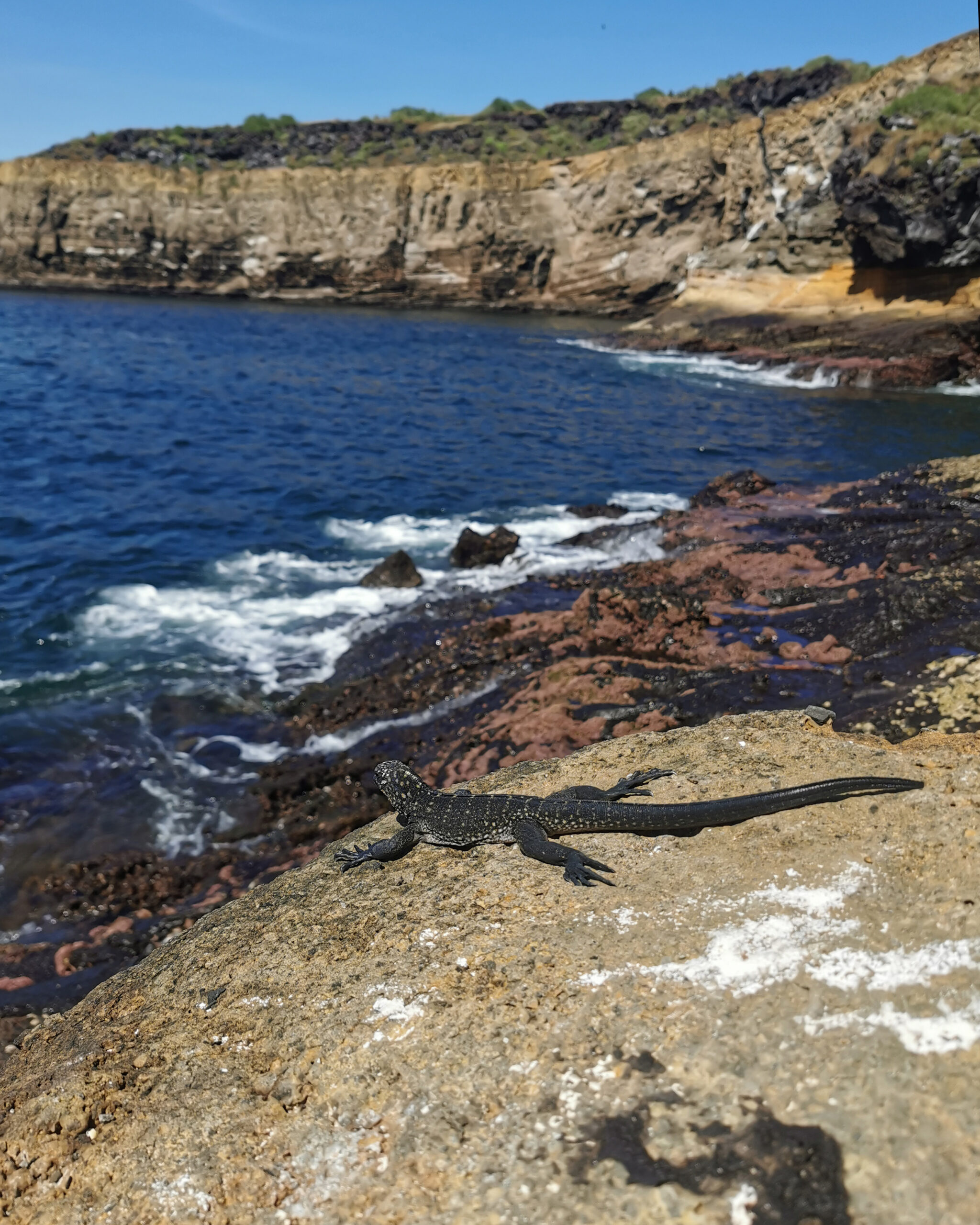
Photo: Andrea Varela
12.05.2024: Final stop – Punta Mangle (Fernandina)
Finally, we arrived at Punta Mangle on the eastern side of Fernandina, our last stop on my journey with the team. Here, I gave a formal interview about the expedition and the work I’ve been doing and then the whole team went out to collect data together. I felt as we neared the end of the day, knowing my time on the expedition had come to an end, I was also relieved at how well the trip had gone, ready to start analysing my data and excited for my colleague Denisse who was joining the team on the second part of their expedition!
Phase 2 of the expedition with Denisse Dalgo
The aim of the second phase of the expedition was to continue collecting iguana faecal samples and algae samples for dietary analysis, capture drone footage to assist with our population counts and count the number of deceased marine iguanas to monitor the impact of El Niño on the species. Replacing Andrea Varela and Eduardo Sampaio on the next part of the expedition were Denisse Dalgo and Isabel Damas.
23.05.2024 – May 23, 2024 Puerto Velasco Ibarra (Floreana)
We departed from Puerto Ayora and arrived at Puerto Velasco Ibarra, our first fieldwork site on Floreana island. Here, we observed marine iguanas foraging directly at the pier, where small algae covered the concrete walls. We immediately began collecting algae samples and flying the drones over the coastal landscape. We then continued our walk to search for fresh faecal samples and additional algae. Near the pier, over an exposed rocky area at the low tide, we could see iguanas foraging for algae, so we collected even more samples.
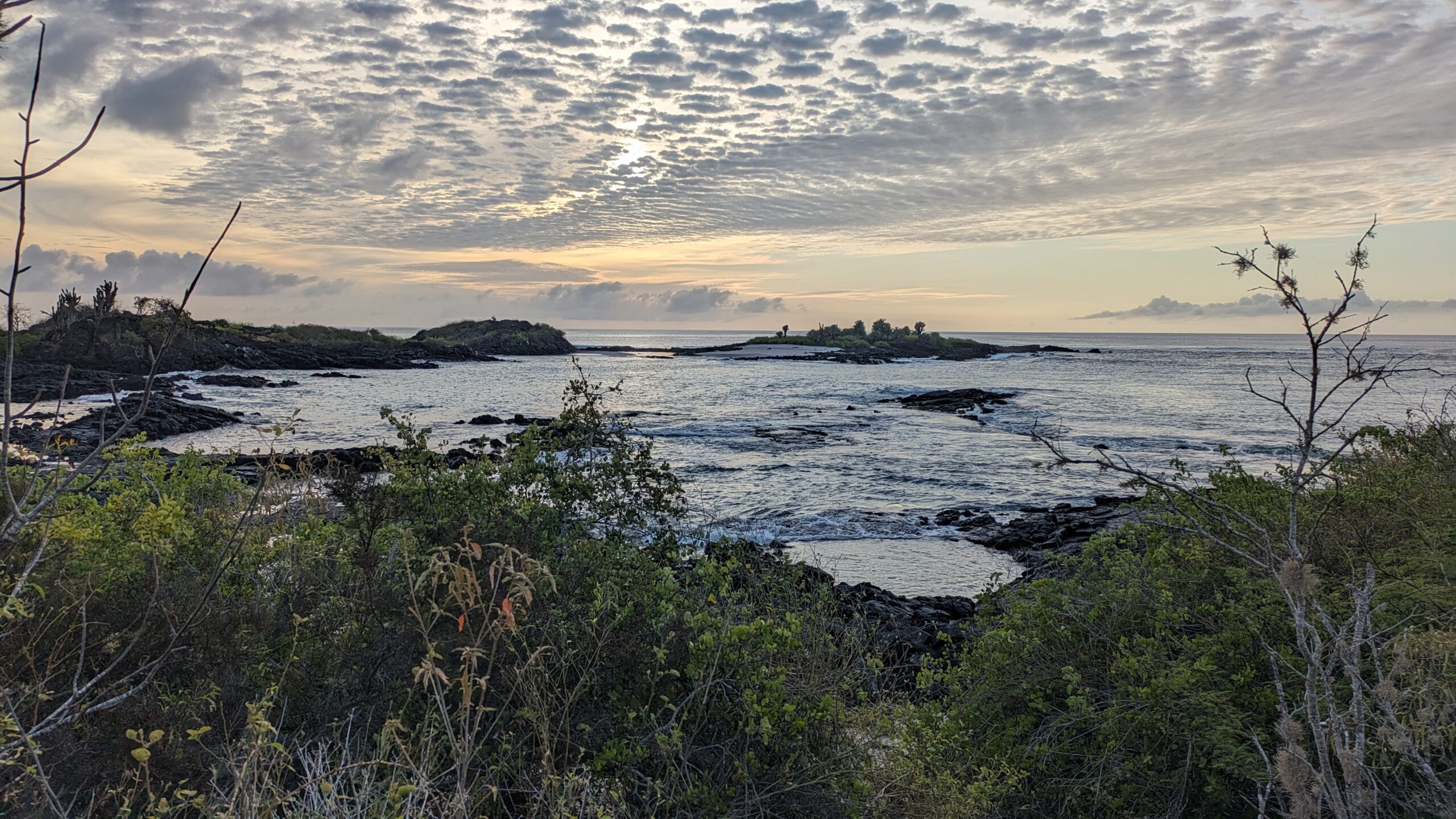
Photo: Denisse Dalgo.
We also visited La Loberia, close to Puerto Velasco Ibarra. The landscape here is beautiful, covered with bright red terrestrial plants from the genus Batis, a drastic contrast from the black volcanic rocks and white sand. Although iguanas here were sparse, we managed to find a few faecal samples.
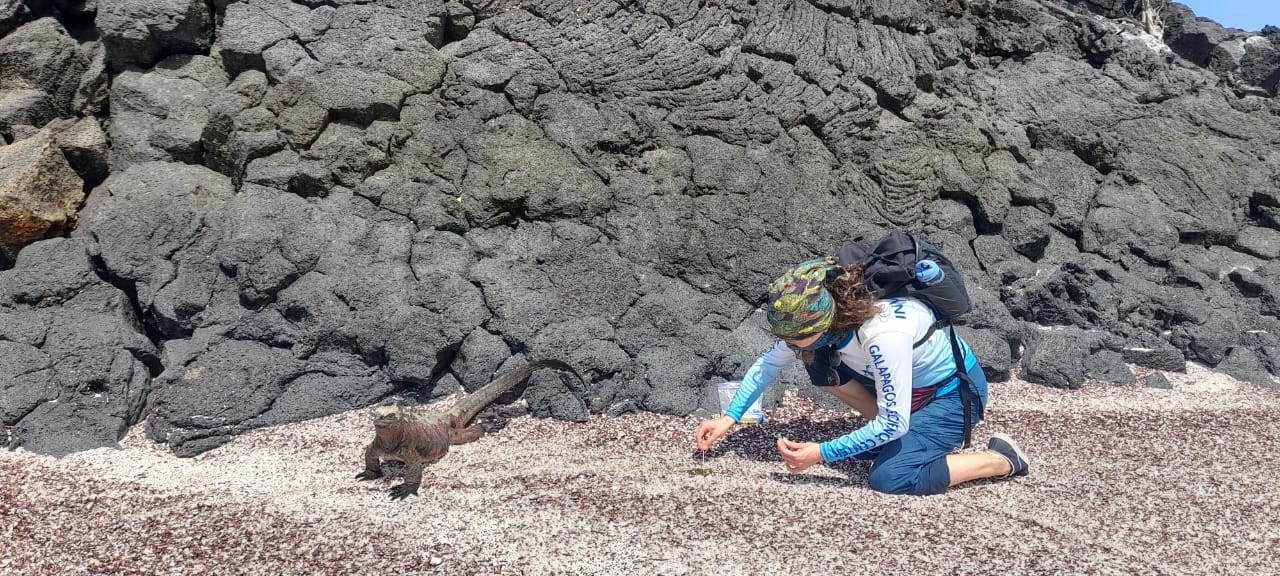
Photo: Denisse Dalgo.
24.05.2024: Montura (Floreana)
From the boat, we briefly explored Montura, a place named for the saddle-like shape of its rock formations.
We landed in a rocky area of the island and had to climb a small cliff to reach our site. Once we’d arrived safely, we started taking aerial photos of the colony using the drones. We found a group of around 20-30 iguanas surrounded by their faeces which we collected. Many individuals were males with a bright red colouration. One male, in particular, was demonstrating territorial and aggressive behaviour towards the other males which is common during the reproductive season.
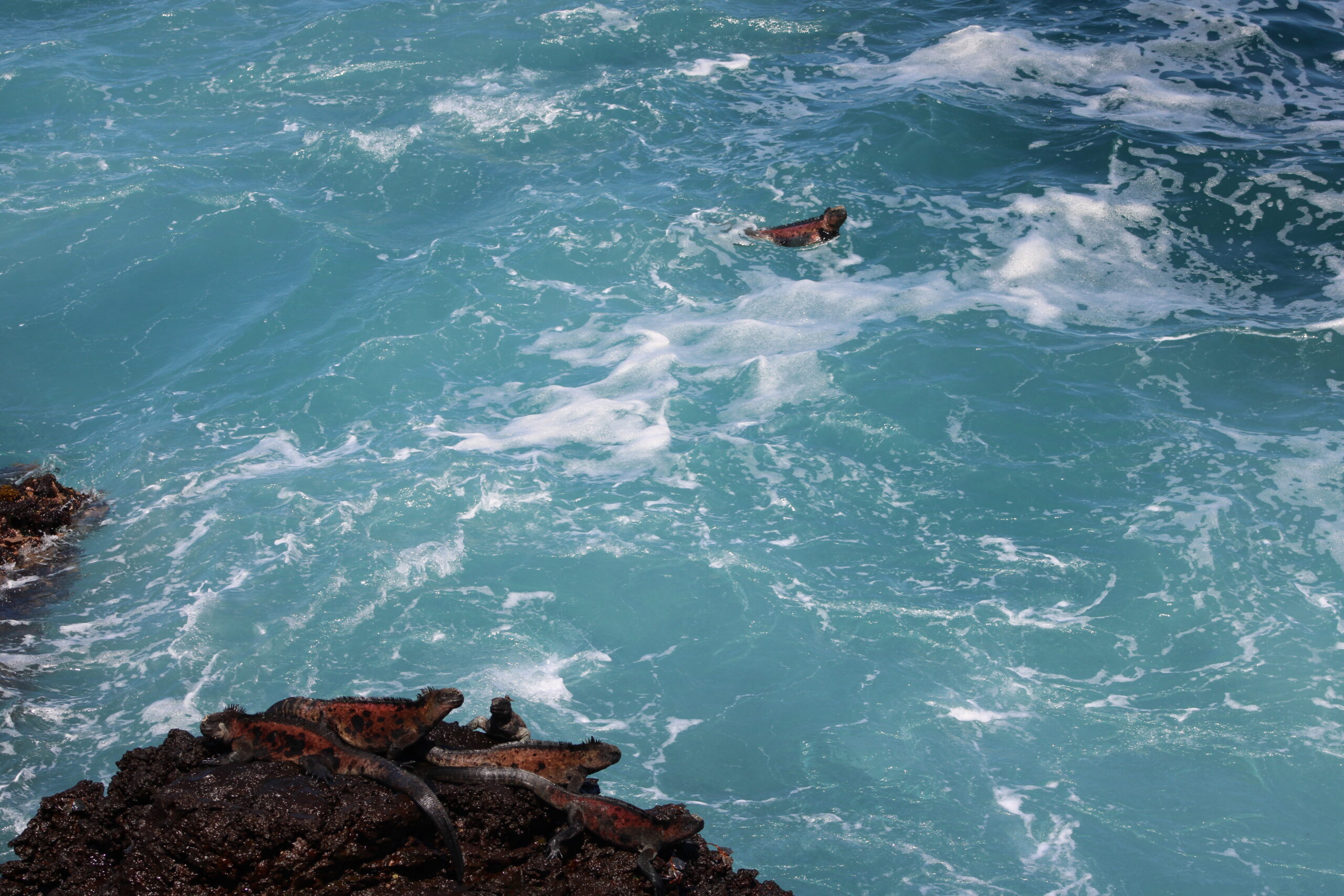
Photo: Denisse Dalgo.
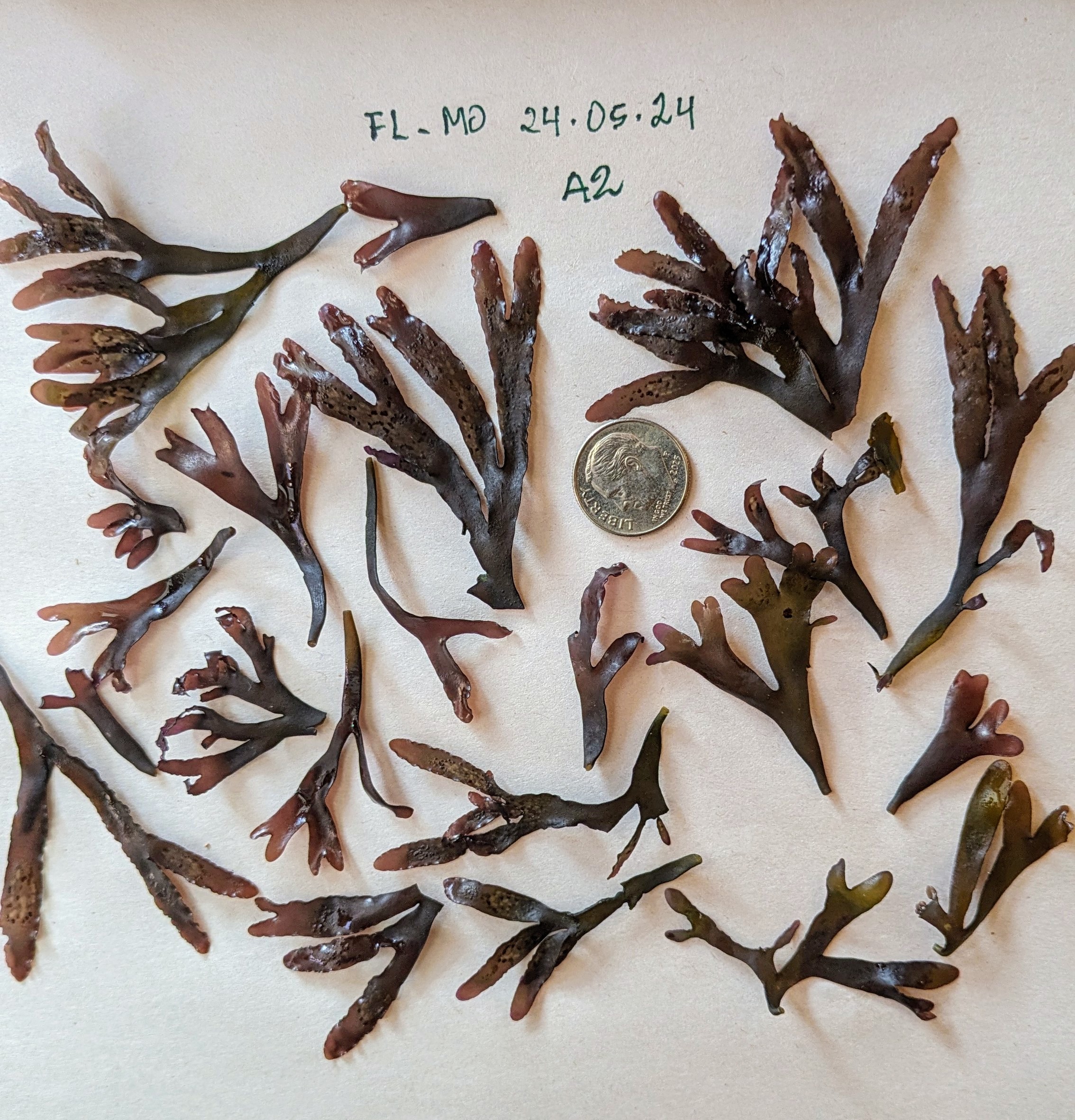
Algae samples that were collected in Montura. Photo: Denisse Dalgo.
25-26.05.2024 – Punta Suarez (Española)
Early in the morning we left Floreana and set sail for Española island. Dolphins accompanied us along the 13-hour journey which added to the excitement. We arrived at Punta Suarez on Española at around 9pm. Close by on a rocky beach many iguanas were feeding in the intertidal zone. At first glance, it seemed like marine iguanas were foraging on green algae, which covered a great part of the rocks. However, upon a closer look, we saw that the iguanas were feeding on small, reddish-brownish algae found among the green algae.
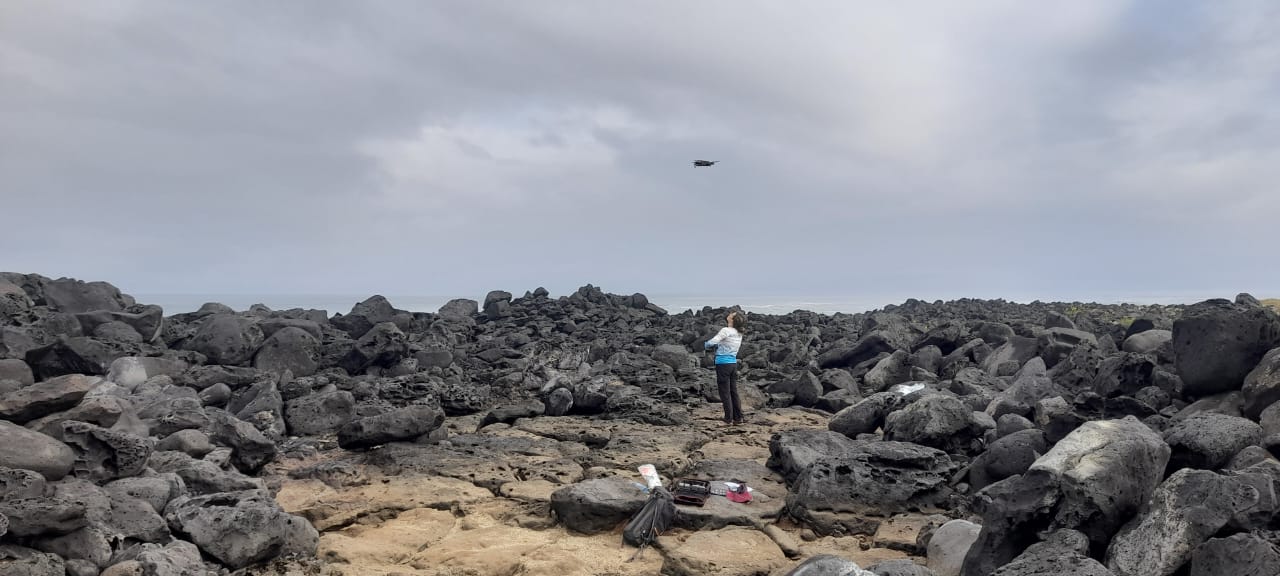
Photo: Denisse Dalgo.
Exploring the island further, we noted the presence of dead iguanas along the coast and many adult individuals looking small and malnourished. This year El Niño has been creating warmer ocean temperatures, which may have resulted in a shortage of the marine iguanas’ food. Fortunately, we also found many healthy baby iguanas.
The next day we completed the drone monitoring. Because this island is a nesting site for many marine bird species, we had to make sure we were careful when flying the drone to avoid disturbing the birds.
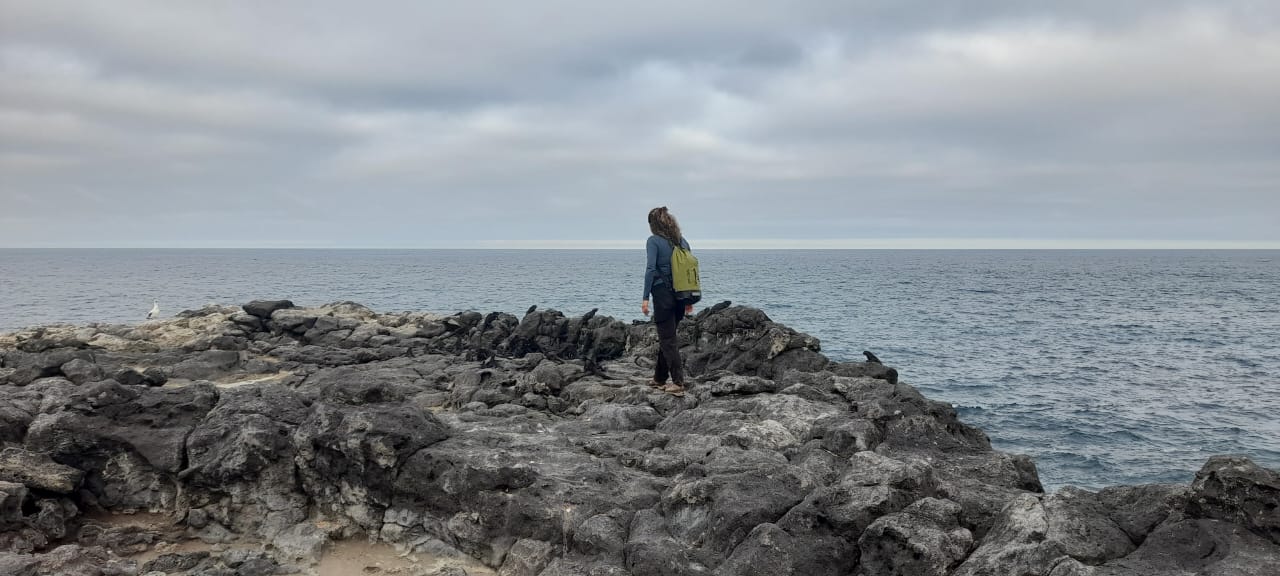
Photo: Denisse Dalgo.
29.05.2024 – Gardner Islet
We continued our expedition to Gardner Islet off Española island. We flew the drones around the islet’s perimeter to locate iguana colonies. We only spotted a small group of four marine iguanas, but further analysis of the aerial images might reveal more individuals camouflaged among the rocks.
30.05.24-03.06.24 – San Cristobal
Our next destination was San Cristobal. This island is particularly interesting because it is home to two subspecies of marine iguanas. We conducted aerial monitoring and sampling at four different locations: Montones de Arena, Punta Pitt, Isla Lobos and Lobería, to evaluate how these two subspecies differ in terms of diet and population status and to understand how these differences occur along their habitat range.
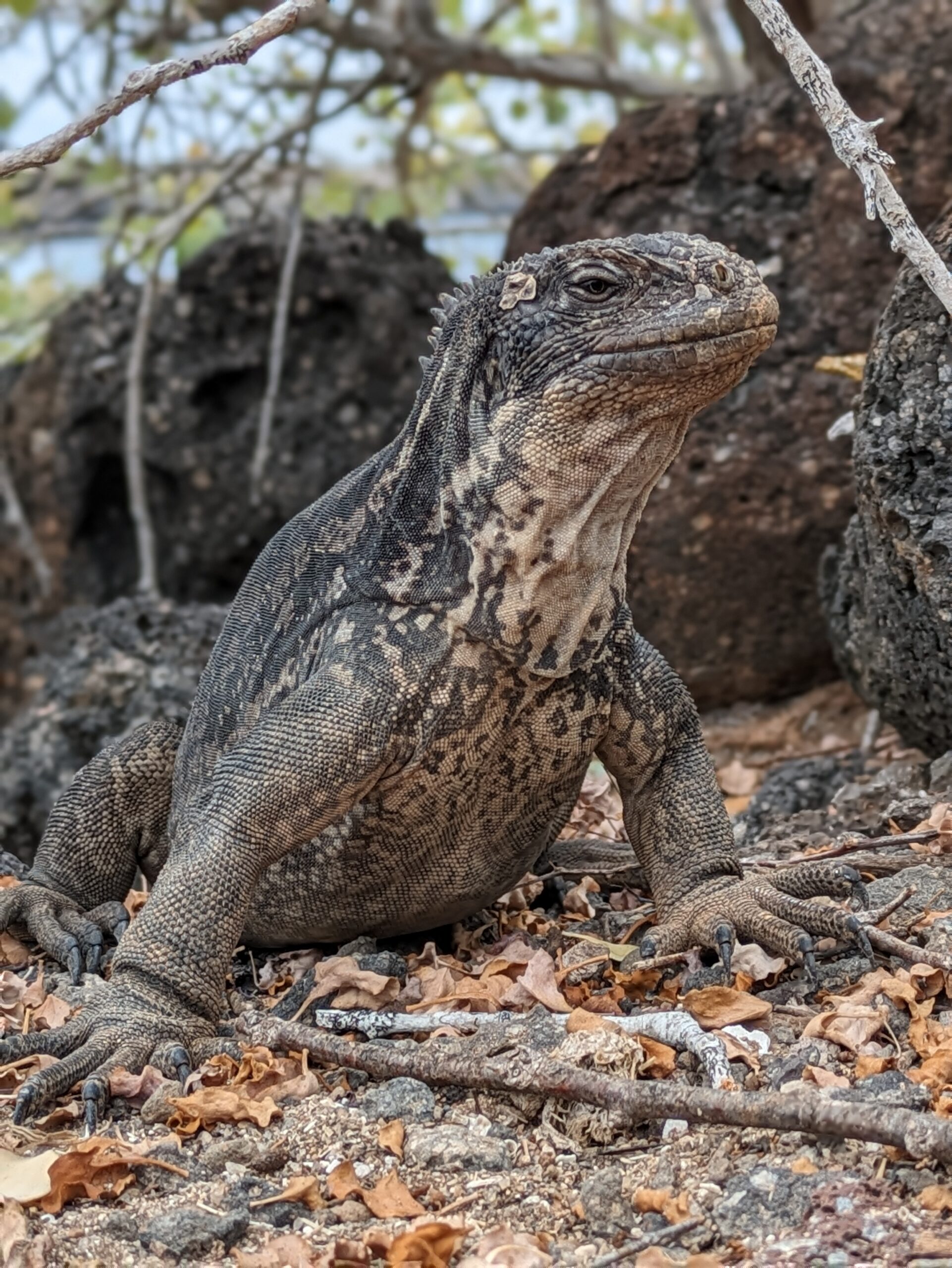
Photo: Denisse Dalgo.
06-08.06.2024 – Santa Fe island
We arrived at Santa Fe and anchored in a spot known as “La Bahía”. The next day, we proceeded to the sampling site called “El Miedo”. Upon landing, we began flying drones, which enabled us to observe iguanas in inaccessible areas. The drone footage revealed a cliffside, inaccessible on foot, where iguanas were feeding on algae. After completing the drone flights, we explored the island on foot, searching for iguanas and their faeces.
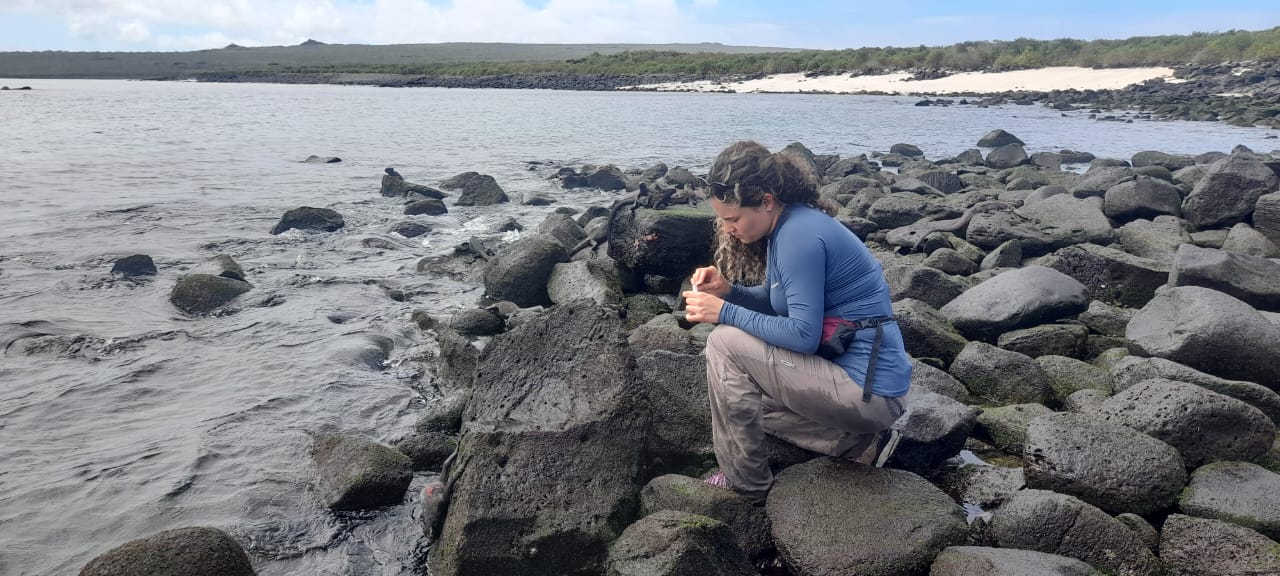
Photo: Denisse Dalgo.
09-10.06.2024 – Plaza Sur Island
The final island on our expedition was Plaza Sur, which I was visiting for the first time. We carried out the drone monitoring and then walked along the coast in search of marine iguanas. On this island, the population of marine iguanas is relatively small. We found some individuals scattered along the rocky shore and collected faeces and algae samples. In contrast, land iguanas were abundant. Plaza Sur is unique in being the only place where hybrid iguanas are found, a result of crossbreeding between male marine iguanas and female land iguanas. After discovering a hybrid iguana, I took the opportunity to observe it closely and think about what its diet might consist of.
Overall, our expedition was a great success. The samples we collected will provide valuable information on how the diet of marine iguanas is changing in warmer climates – crucial information in the context of global climate change. In addition, the aerial images we collected will help us assess the status of the population following an event that we know significantly affects this species.

